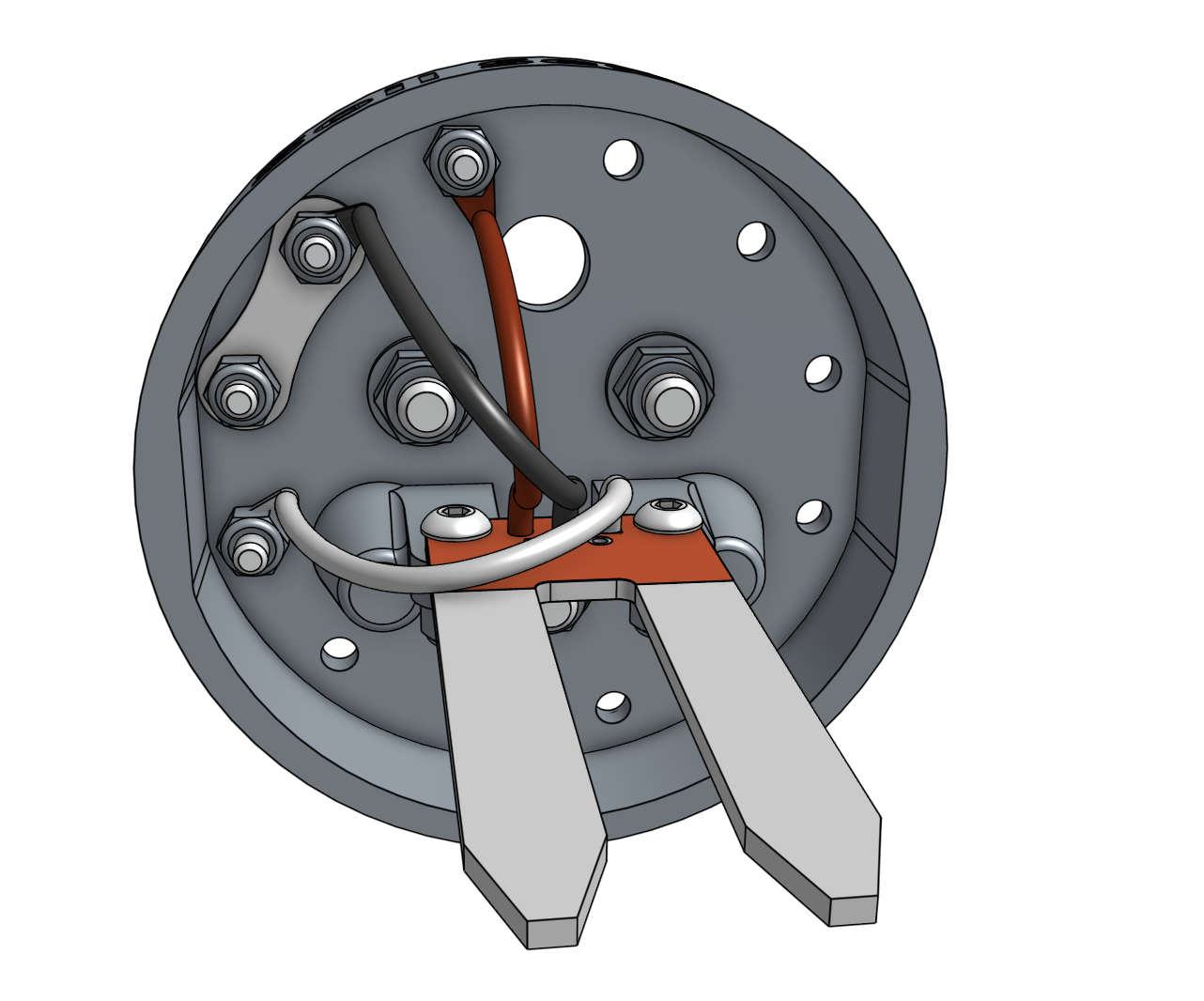Soil Sensor
Documentation and assembly instructions for the FarmBot Genesis soil sensor
This single 3D printable component magnetically mounts onto FarmBot’s UTM like any other tool. It works by driving the tool vertically into the soil so that the soil properties can be accurately read.
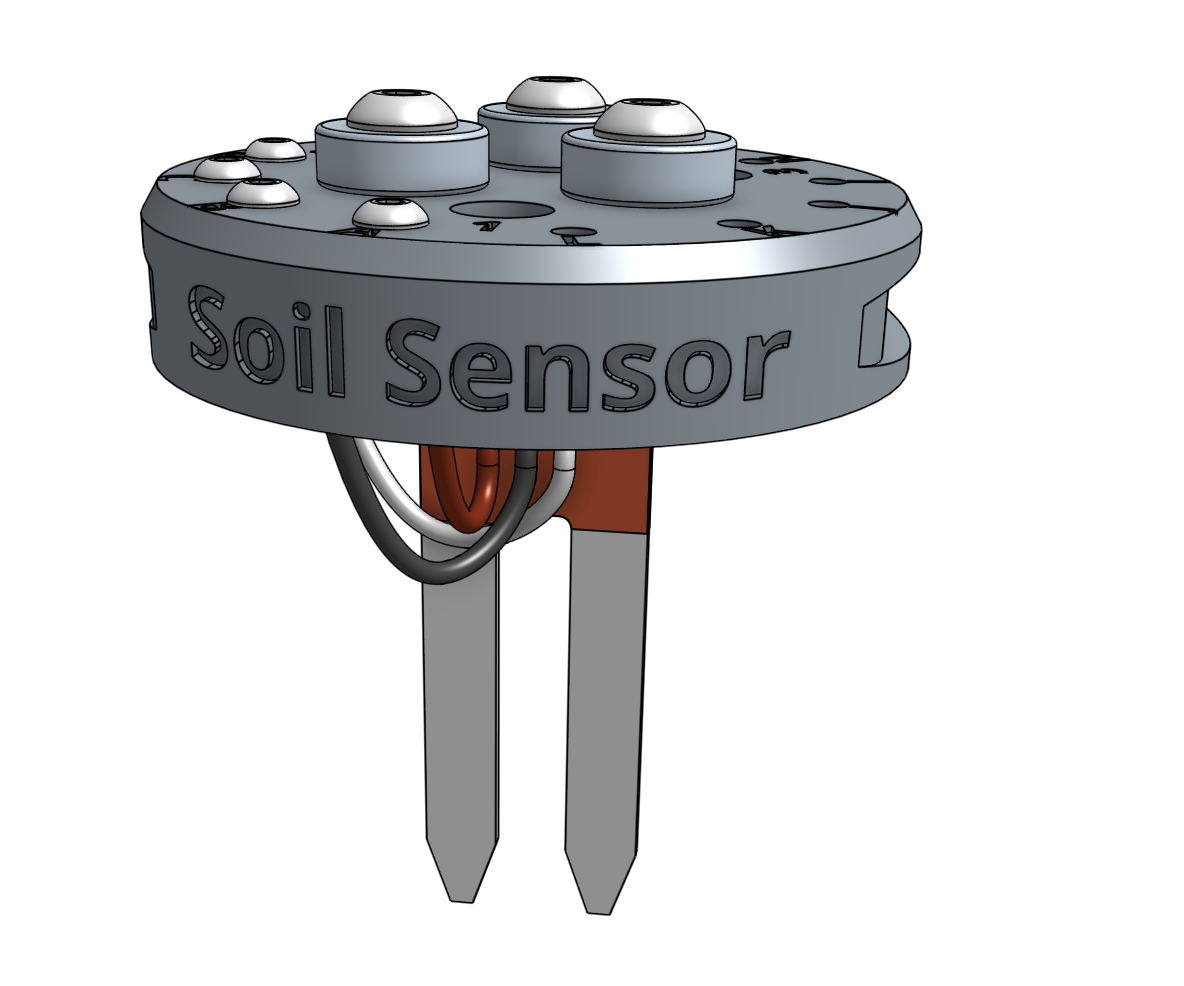
20 minutes
This is the estimated time it will take to assemble the soil sensor.
Component list
| Qty. | Component |
|---|---|
| 1 | Soil Sensor |
| 3 | Soil Sensor Jumpers |
| 1 | Soil Sensor PCB |
| 3 | Ring Magnets |
| 3 | M5 x 16mm Screws |
| 3 | M5 Washers |
| 3 | M5 Locknuts |
| 6 | M3 x 12mm Screws |
| 6 | M3 Locknuts |
| 1 | Jumper Link |
Step 1: Install the magnets
Install only the magnets using the instructions in the basic tool hardware reference guide.
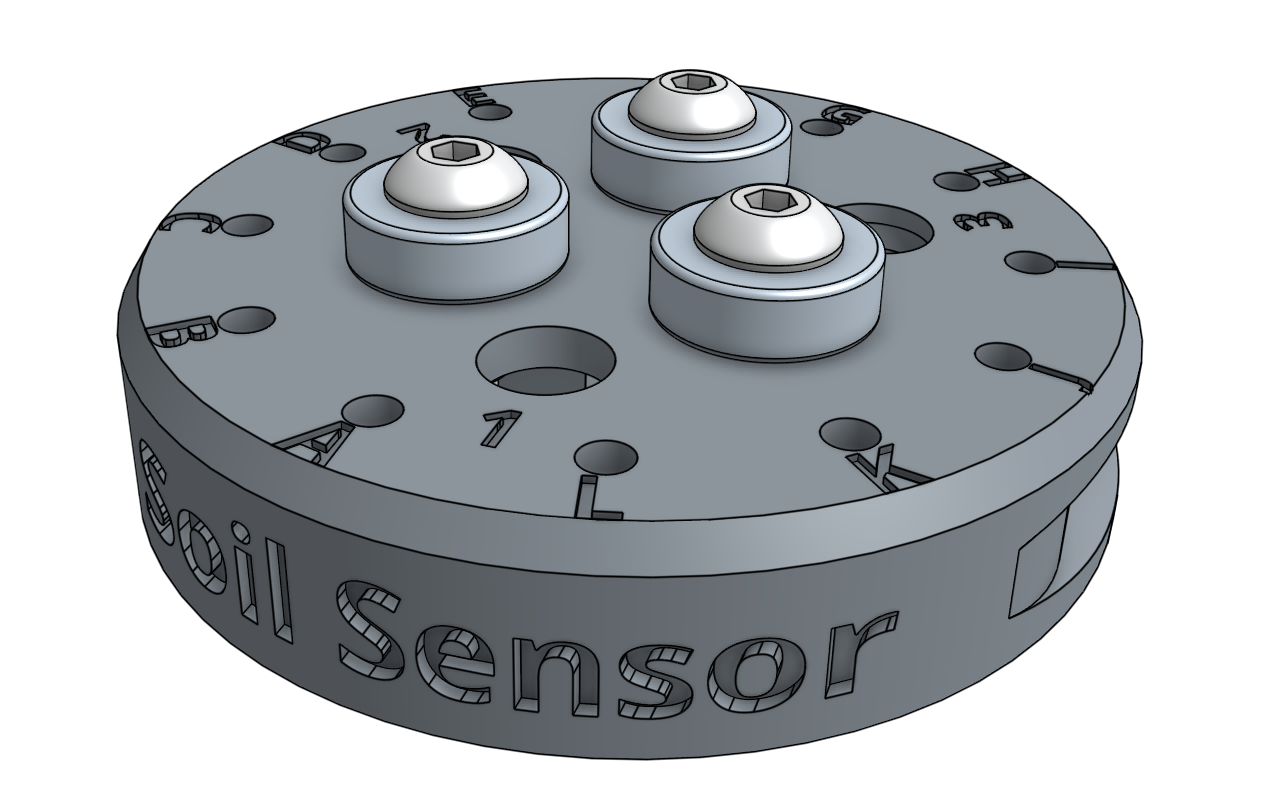
Step 2: Install the moisture sensor
Use the small bladed screwdriver to secure the white, black, and red soil sensor jumpers to the soil sensor PCB. White should be connected to SIG, black to GND, and red to VCC.
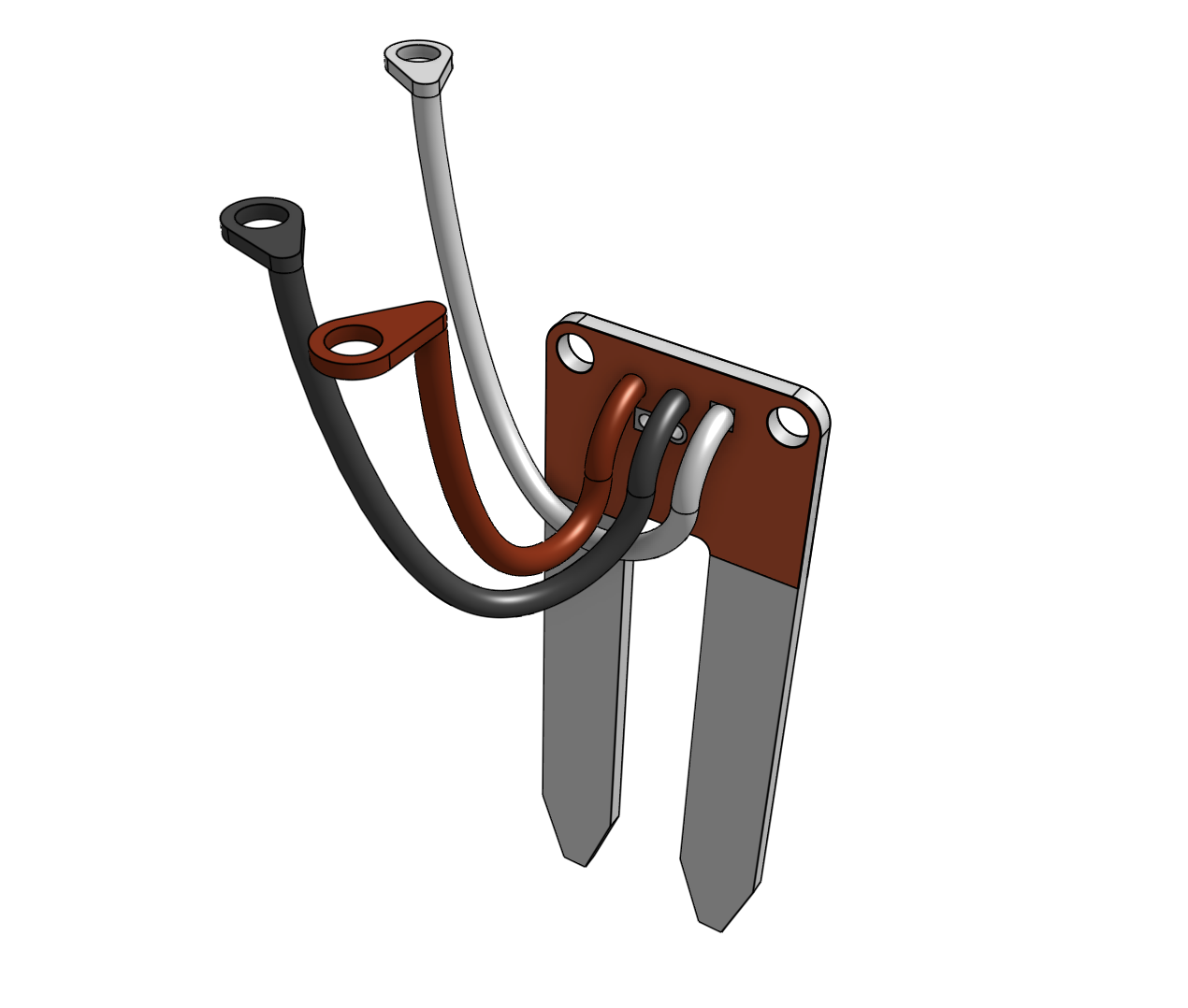
Note: the black screw terminal on the soil sensor PCB is not shown in this image.
Attach the soil sensor PCB to the soil sensor using two M3 x 12mm screws and M3 locknuts. The sensor should be on the front side of the base’s mounting tabs. The heads of the screws should be on the sensor (front) side while the locknuts should be on the mounting tabs (back) side. Do not overtighten the screws as this could damage the soil sensor circuit board.
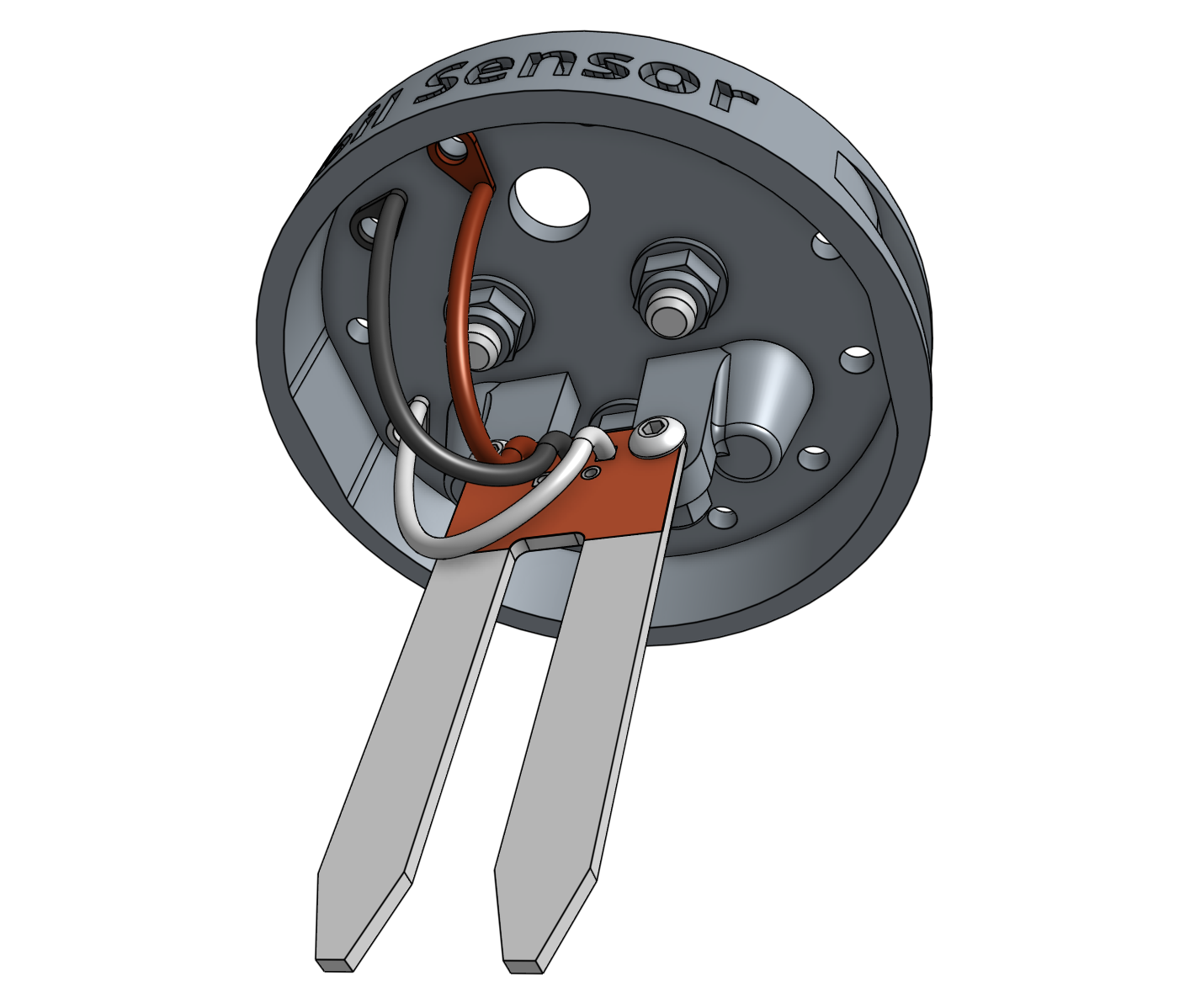
Step 3: Install the electronic screws
Use the 2mm hex driver and 5.5mm box wrench to attach two M3 x 12mm screws and M3 locknuts into the holes labelled A and D on the soil sensor. The screw heads should be on the same side as the magnets. The screw in the A position should hold the ring terminal of the red soil sensor jumper. The screw in the D position should hold the ring terminal of the white soil sensor jumper.
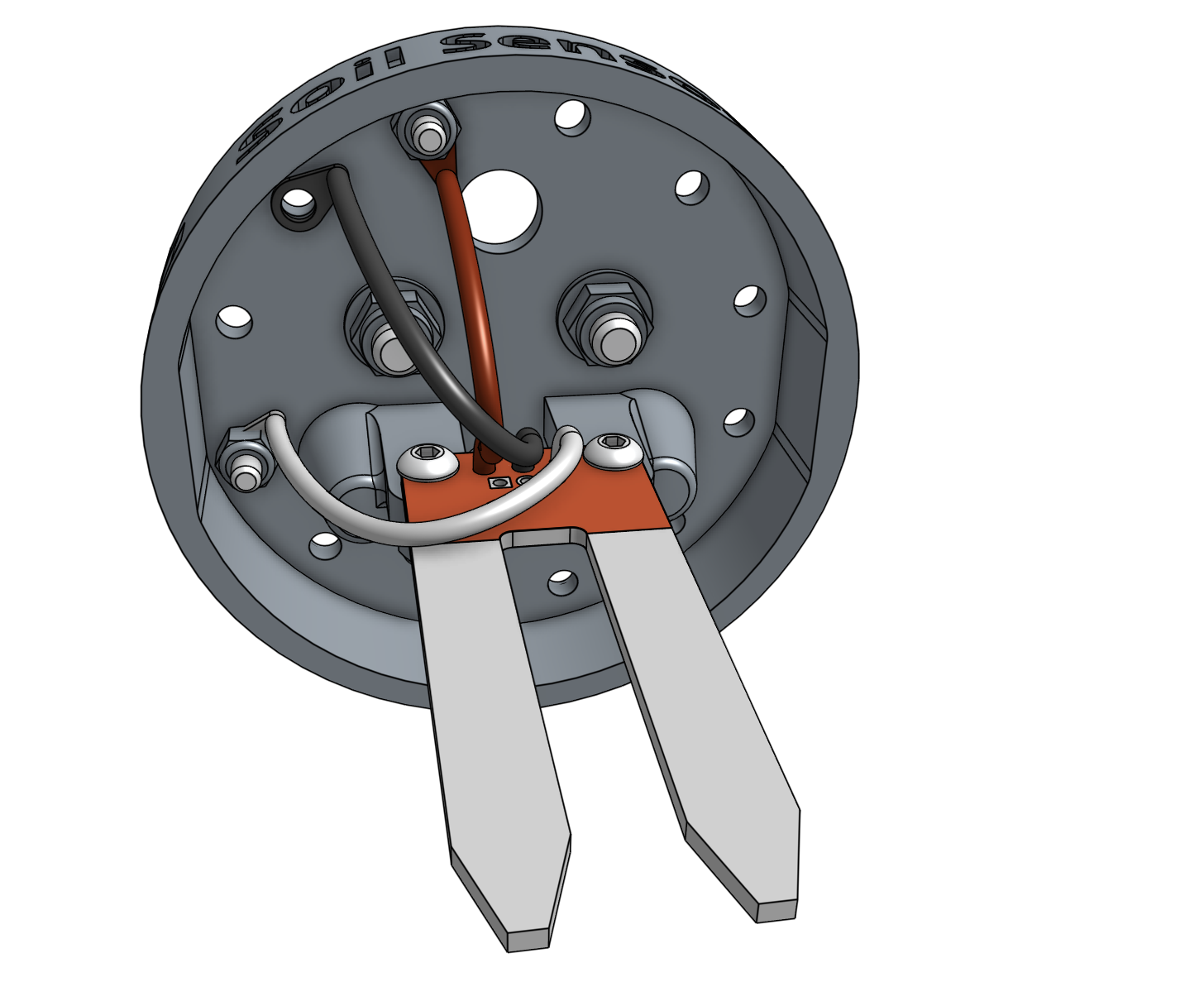
Step 4: Install the jumper link
Attach the jumper link to positions B and C using two M3 x 12mm screws and M3 locknuts. The screw in the B position should hold the ring terminal of the black soil sensor jumper.
